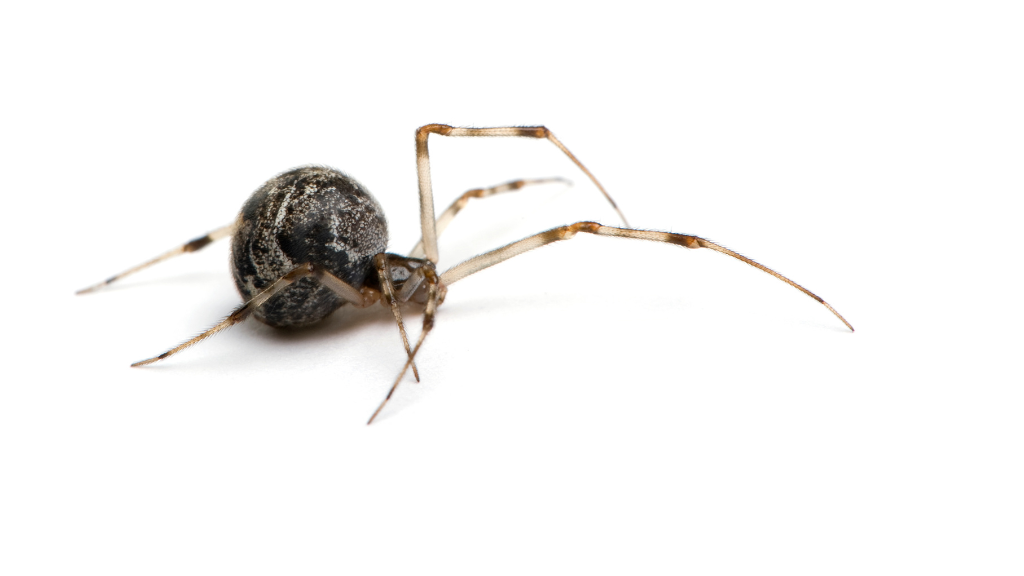Common Spiders in Texas

A Guide to Spiders in Texas
According to Texas Parks and Wildlife, there are over 900 species of spiders in Texas, but only two are harmful to human beings. Knowing the difference between harmful and harmless spider species can help you protect yourself, your loved ones, and your home.
In this post, we’ll cover the most common spider species in Texas, simple DIY methods to prevent and control spiders, and why a professional field expert can help you control spider populations.
Common Spiders in Texas

American House Spider
Physical Appearance
American house spiders are among the most common spiders in Texas. These arachnids have a round abdomen, white markings, are gray in color, and form messy, tangled webs.
Habitat
You’re likely to find American house spiders in dark, hidden places such as basements, corners, crevices, and under cabinets. They’re also typically found around windows where flies—a favorite prey—are prevalent.
Is This Spider Dangerous?
Fortunately, these spiders don’t harm humans.

Wolf Spider
Physical Appearance
Texas wolf spiders are usually black, gray, or brown. They vary in size, with some species reaching about the size of a half dollar.
Unlike American house spiders, Texas wolf spiders are nomadic and don’t spin webs to trap their prey. Instead, they hunt for small prey such as crickets, cockroaches, and other small insects.
Habitat
These spiders are usually found outside, but they do come indoors from time to time and can be found in places such as garages, sheds, or even basements. They also favor naturally-occurring gaps in the house such as in the space underneath boards or cinder blocks, around debris, or anywhere insects are common.
Is This Spider Dangerous?
You don’t need to worry about your safety with this species, as Texas wolf spiders would rather hide than bite. But if they scare you and you’d like a field expert to put your mind at ease, we’d be happy to provide a free quote.

Black Widow Spider
Physical Appearance
According to National Geographic, black widow spiders deliver some of the most feared spider bites, and their venom is fifteen times stronger than that of rattlesnakes.
Black widow spiders are known for their shiny black color and red hourglass-shaped marking on their abdomen’s underside.You may sometimes spot red markings on its back as well.
Habitat
Black widow spiders prefer small, undisturbed areas such as corners and crevices, tall grass, woodpiles, mailboxes, and garages.
Is This Spider Dangerous?
While there are over 2,200 back widow bites reported each year, no deaths have been reported for over three decades. But that doesn’t mean these bites are harmless. Reactions to a black widow spider bite can take a few hours to appear and can include vomiting, nausea, muscle stiffness, intense pain, and trouble breathing. If you’re bitten by a black widow spider, seek medical attention immediately.

Brown Recluse Spider
Physical Appearance
This brown spider is best identified by the violin-shaped marking the extends from its head to its back. Unlike most other spiders, brown recluses have six eyes instead of eight.
Habitat
A brown recluse’s favorite habitat is in concealed, undisturbed areas, such as in basements, cellars, corners, and crevices. They also love hiding in shoes and underneath folded sheets and towels.
Since brown recluse spiders are common in Texas, it’s a good idea to get in the habit of shaking out your clothes, towels, and shoes before using them and to wear gloves when working in garages and sheds.
Is This Spider Dangerous?
Brown recluse spiders are harmful, and you should seek medical attention immediately if you suspect you’ve been bitten. The brown recluse’s venom kills the cells and tissue around the bite and can cause serious illness.

Jumping Spiders
Physical Appearance
There are over 5,000 species of jumping spiders. Their colors vary, and they can be striped like a zebra, black with distinctive markings, or even iridescent. Perhaps their most distinguishing (and disconcerting) feature is their large front-middle eyes.
Habitat
Jumping spiders can be found almost anywhere around your house, indoors or out.
Is This Spider Dangerous?
These spiders can bite as a defense mechanism, but their bites are unlikely to cause any harm.
How to Get Rid of Spiders in Texas
Preventing spider infestations is the best way to avoid having an unmanageable arachnid problem. Here are some simple, effective measures you can take to decrease the activity of these pests:
- Seal up entry points in your home. Cracks and crevices provide an excellent way for spiders (and other pests) to come inside. Look for gaps around windows, doors, and plumbing voids in particular.
- Turn outdoor lights off in the evening. If you have serious spider problems, keeping outdoor lights off at night will keep the bugs that spiders prey on away from your home. With fewer food sources, you’ll have fewer spiders.
- Keep your home clean. Improperly stored food attracts the insects spiders are likely to prey upon. Sweep and vacuum regularly to get rid of spills or crumbs.
- Mow your lawn and trim overgrown vegetation. Unruly bushes and trees can serve as a hiding place for spiders.
- Choose lidded plastic storage bins instead of cardboard boxes. These stronger barriers are harder for spiders to infiltrate and will protect your stored items better.
Let Moxie Help Remove Spiders from Your Home
Spiders can be unpleasant pests to have in your home, so if you’d like a hand taking care of them, let our pest experts help. Our field experts train daily on pest identification, behavior, and eradication methods so we can provide exceptional service on every visit. Contact Moxie Pest Control to get a custom spider treatment solution for your home or business today.



